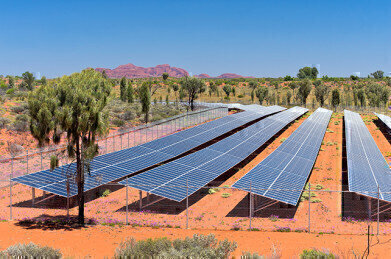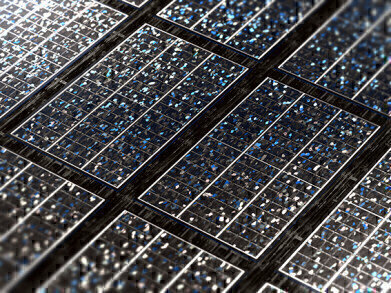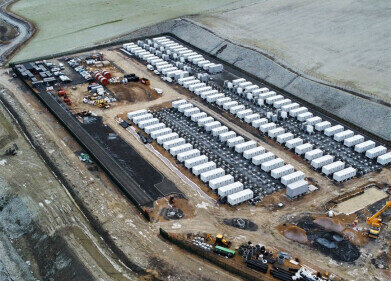-
 Power from PV
Power from PV -
 Power from PV
Power from PV
Green Energy
Breakthough in solar power generation
Apr 01 2021
Author credit - Stephen B. Harrison, sbh4 consulting
PV Solar panel power management improvements could lead to a step change in the economics of solar electricity generation. CQSola, located in Queensland, Australia is innovating in this area. One of the most tangible benefits of their power management system is that it allows every solar panel in each array to generate electricity to its full potential. It thereby solves an age-old problem in PV farm management: if one single panel is operating below peak performance, it limits the power output of many other panels around it.
The problem that is being solved is a bit like this: when trucks travel in convoy on a single-lane highway or mountain road, they must travel at the speed of the slowest vehicle. Put them in a wide field next to each other and the fastest trucks can go fast, and the slower ones can do their best to catch up. Just like horses at the race-course - the fittest and fastest are not held back.
The power loss from the problem of ‘trucks in convoy travelling as the speed of the slowest truck’ can mean significantly less power generation versus the maximum potential output of the PV solar scheme. CQSola believes that for many schemes the additional power output will be between 10 and 25%. They are also confident that 40% is possible, as has been demonstrated on a pilot installation in Eastern Australia.
The CQSola equipment is of particular interest for reviving older installations or for use on solar schemes that have a sub-optimal geographical location. In older systems it is often the case that some panels have aged prematurely and are holding others back. Replacement of a panel or whole array is sometimes possible, but with aged systems it is not always easy to find spare parts. This can lead to the situation where panels or arrays are of different power output and some parts of the system are being held back.
Solar parks where trees or overhead power lines create share are similarly impacted. The power management devices are designed to avoid these localised issues pulling the whole solar park down. The implications for new solar farms or retrofitting the CQSola power management technology to existing farms could be a significant uplift in power generation. The alternative might be a much larger PV array with associated space and cost implications.
Trimming back the total cost of ownership
The CQSola equipment has several features beyond the increase in power output. Their devices can be used to isolate individual panels within the array for maintenance. The safety of the maintenance team can be secured without shutting down large areas of the solar farm which would result in overall generation yield reduction.
The isolation feature can also be automated to react to environmental emergencies such as fires or hurricanes. Pro-actively shutting the PV panels down when a storm is approaching can minimise the damage caused be the severe weather event.
The power management features also enable the solar panels to be operated for an extended period and still achieve high electrical output. The typical life of a panel can be stretched from 20 to perhaps 25 years. That means replacement costs are reduced and the solar panel disposal and recycling burden is minimised.
Breaking through the plateau of PV panel performance improvement
There are several reasons that the cost of renewable power has fallen in recent years: PV and wind turbine technologies are becoming more efficient; larger projects are being executed to leverage economies of scale; higher production volumes for PV panels and wind turbines are driving down unit costs.
The main reason that the average unit cost of renewable power has been falling globally in the past decade is that large projects are being installed in parts of the world where the weather is ideal.
Across the solar industry, the pace of development to improve the conversion efficiencies of UV light to power is slowing: a plateau is being reached. Different areas of focus will be required to solve other problems that have received less attention up to now. Only by addressing every link in the chain can the overall costs of renewable power be minimized. This is where PV panel power management may be able to deliver the next big breakthrough.
Events
Apr 22 2024 Hannover, Germany
Apr 23 2024 Kuala Lumpur, Malaysia
Apr 24 2024 Sao Paulo, Brasil
May 05 2024 Seville, Spain
May 13 2024 Munich, Germany













